
Lee has been a Primary School teacher for eight years at Davyhulme Primary in Trafford, Manchester. He provides INSET and CPD internationally, looking at ways to raise standards across the curriculum. He works alongside Alan Peat Ltd and the Literacy Shed. His blog provides teachers with a variety of ideas for using technology in the classroom. Lee has also released a range of eBooks demonstrating how technology, in particular iPads, can enrich teaching and learning in the classroom. His latest eBook, The 12 iPad lessons of Christmas, was the 3rd best selling eBook in the iBook store.
Lee Parkinson is a prominent voice in the British education community. Known through his Twitter (@ICT_MrP) and blog (mrparkinsonict.blogspot.co.uk), Lee shares a huge amount of ideas and inspiration with peers far-and-wide. He’s a Primary teacher based in Manchester, and spends the rest of his time being an author, trainer and family man. His most recent book is entitled ‘15+ Ideas For The Emoji Keyboard In The Classroom’.
The fatal mistake schools make when deploying mobile technology is thinking that by purchasing the hardware, that’s the hard part done. In fact, the easiest step in a school’s iPad journey is buying the technology; the successful use of the technology is determined by what schools do after this.
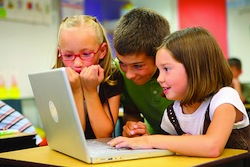
The idea behind children blogging is simple: give them a platform to write for a real audience as this provides a purpose to write. When children have a purpose, it impacts on the quality of writing.
The most difficult part for teachers trying to encourage children to blog is to create an audience for children to write for. There are a few websites teachers can sign up to that will really help build an online audience. These are:
Photo credit: lupuca
Consolidating new information can be a very difficult process for students, particularly if they don't understand the main elements of a fact or concept. Using the iPad combined with suitable apps that are flexible enough to cater for their creative and imaginative minds, however, students are given full control over the subject from researching it to sharing and presenting it to the class.

When it comes to learning new knowledge and facts relating to a topic, it can sometimes be tricky to find tasks that help children share their learning so that they retain the information.
I have seen many lessons and work in books that just seem to involve research and simply copying it into books. I always question how much knowledge the children can recite from this approach.
The iPad is now transforming the way children demonstrate their learning and recently a class of Year 2 children have been using different approaches relating to the same topic of animals in the Savannah to show how these activities are making the new found knowledge stick.
Teacher and ICT coordinator Lee Parkinson explains how popular games such as Temple Run can actually be used as a disguised method of learning, rather than a simple incentive, hence the term 'camouflaged learning'. With so many aspects of maths, English and science already incorporated within games (scores, coins, trajectory, gravity, words) and a huge potential for post-play learning to be done with numbers, vocabulary, concepts etc., teachers can potentially use any game as a learning tool.
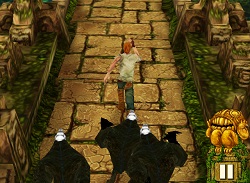
I have found I use iPads in two major ways within the classroom: as a tool to engage and as a tool to create.
In most of the projects I have completed with the children this year, I have tried to combine both these elements to get the best work from the children. Firstly, using the iPad to provide a focus to use in lessons has had a massive impact as far as engaging children, motivating them and leading them into a 'false sense of learning'.
The idea that children are learning by doing activities where they feel they are 'playing' is something I am always trying to promote. It is the perfect way to get disengaged or reluctant learners on board and almost trick them into writing, reading and solving problems. Nothing sums this phrase up more than the work produced by children when the focus has been the iPad games they are obsessed with - Angry Birds and Temple Run.
Photo credit: Themeplus
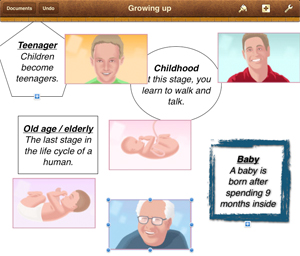
Many of my posts look at ways to use the iPads in Literacy and Numeracy to enhance learning and engage, motivate and inspire children. But how can using the iPad also help children in other subjects like Science, History or Geography?
Here are some ideas about how using the iPad can help students to show, share and develop their learning in these subjects, with a distinct focus on Science.
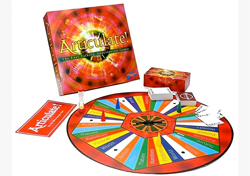
Like most people, I absolutely love a good board game. Many a Christmas has been spent playing, enjoying and reveling in entertaining games with close friends and family. They never seem to disappoint, they always bring the family together, and are great for improving team work and collaboration skills.
This has made me think about how could they be integrated into the classroom.
The three board games that I am going to talk about all have fantastic potential in the classroom. Although they are aimed at adults, the rules for the games can be easily adapted by teachers to fit in with most curriculum areas.
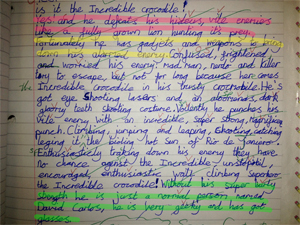
For the past 5/6 years, my school has been using Big Writing in literacy to provide a focused time for children to write. As time has passed we have moulded our approach to include other useful aspects of literacy. We now tend to use our Big Writing session as a final piece to a particular text type focus, unless it is an assessed piece and has to be a standalone lesson. Often we use a Big Writing lesson at the start of a text type to assess what the children already know or can remember from previous years. This is a great way of informing future planning. For example, if you were covering 'Instructions' and few children used imperative verbs, this would inform you to focus on this in your planning.
After a year or so of using Big Writing, I started to think about the whole writing process. It was advised that during the next Big Writing session children should be given time to read back on their work, look at the comments and, as a class, decide on some “goal scorers.” This is a good way of revising, but I felt it wasn't enough; also, if it was a whole week or two later, the activity is long forgotten by the children. I am sure if you ask any author they will always say that the revising and editing part of writing is possibly the most important. But how can we teach this and instil a reflective approach in children? Timed writing sessions don’t provide this quality time to reflect on your writing. It led me to make a resource which I have found invaluable ever since.
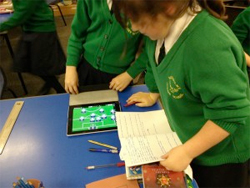
As my role this year involves me teaching across the whole school using a class set of iPads, I feel it is important to really experiment to see how using the iPads can impact across the curriculum and not just within ICT. Consequently, with the Year 5 cohort, I put together a project linking literacy with football. I decided to do this project for two reasons: (1) to see whether using the topic of football can engage the more reluctant boy writers in the class, and (2) to see how well linking digital media and speaking and listening can impact on the children's writing.
As I was working with the classes once a week, the lessons ran over a half term. However, it was the lesson the children looked forward to each week as they were completely enthralled and engaged due to the activities involving speaking and listening whilst using the iPads. I have found that the children's confidence and willingness to write after having the quality time to discuss ideas and experiment leading up to a finished piece of writing had a massive impact on the final product.

A community-driven platform for showcasing the latest innovations and voices in schools
Pioneer House
North Road
Ellesmere Port
CH65 1AD
United Kingdom